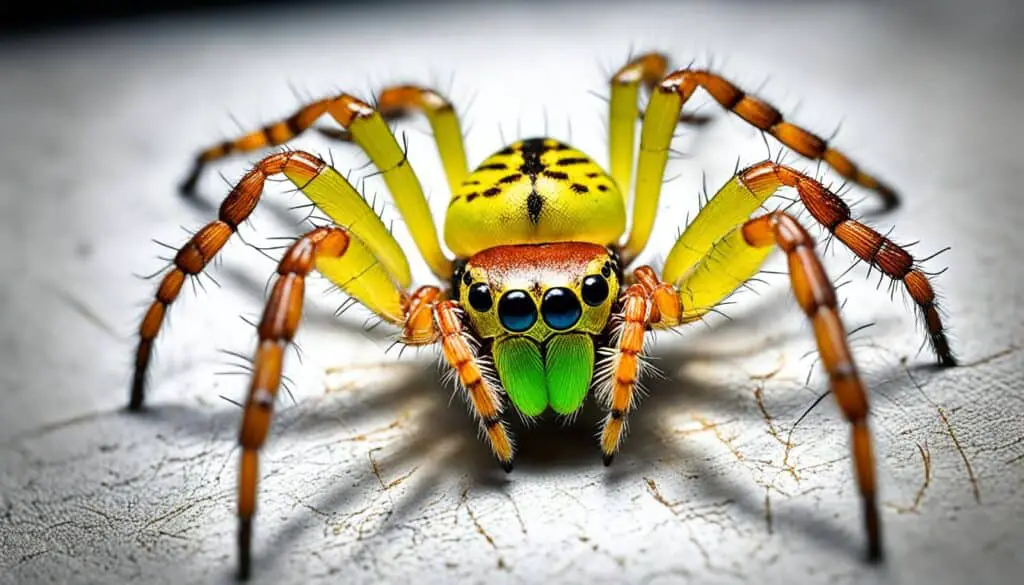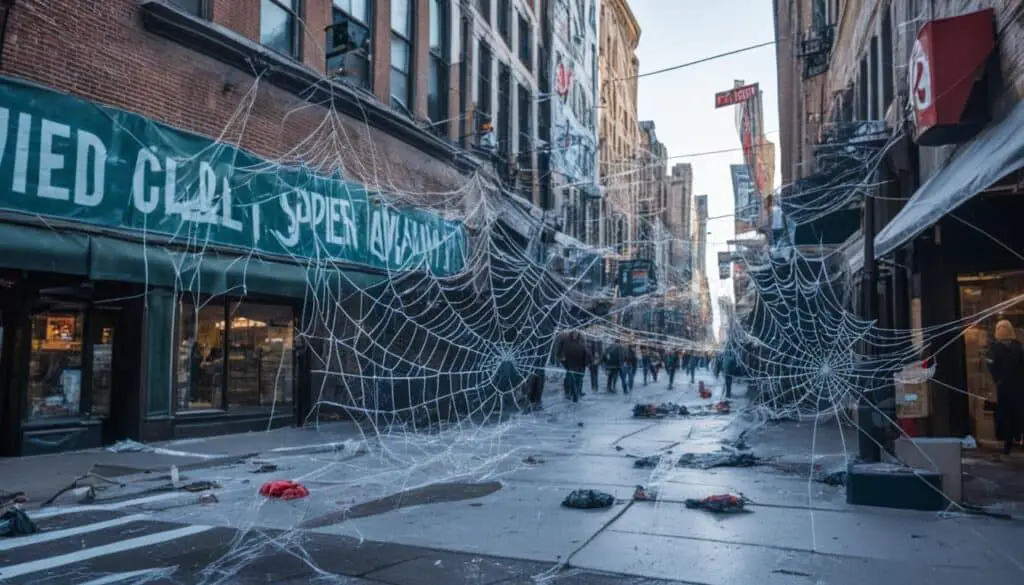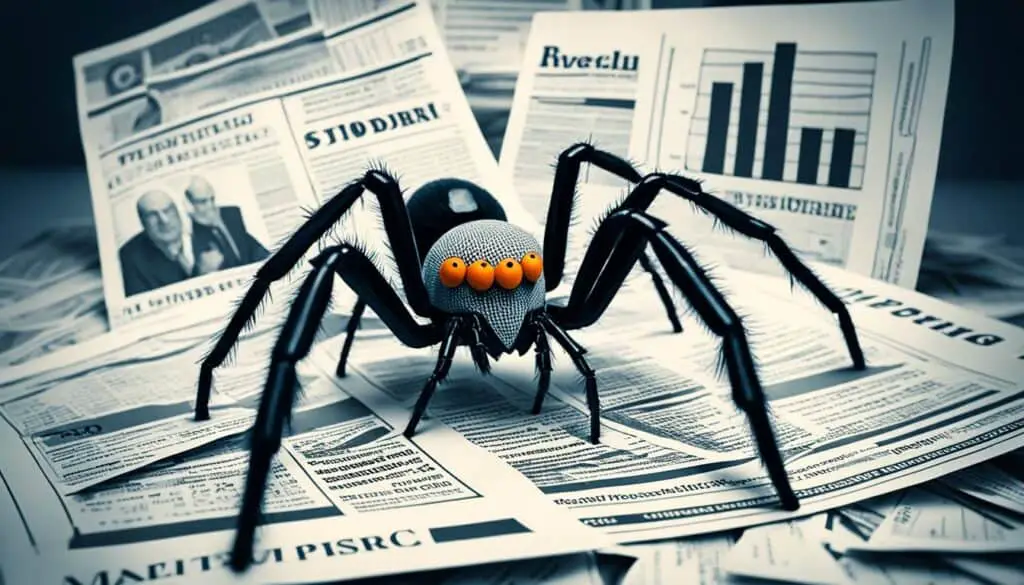The Joro spider, known scientifically as Trichonephila clavata, landed in the U.S. over a decade ago. They’ve expanded from Georgia to Tennessee, creating worries. People and experts alike are concerned about the spiders’ spread and what it means for our environment and wallets.
Joro spiders may look scary and can throw silk up to 10 feet, but they won’t hurt you. They could, however, travel far and impact local habitats, leaving experts like Dr. Alejandro Calixto of Cornell vigilant. He says New York isn’t facing danger from the spiders yet. But their continued spread could lead to increased pest control bills and harm our ecosystems.
Key Takeaways
- Joro spiders have been in the U.S. for over a decade, predominantly in Georgia and South Carolina.
- Experts are concerned about their economic and ecological effects on East Coast ecosystems.
- Dr. Alejandro Calixito notes that their progression northwards could continue unless interventions occur.
- Despite alarming appearances, Joro spiders exhibit minimal aggression towards humans.
- The uncertain ecological effects of Joro spiders warrant ongoing vigilance and study.
Introduction to the Joro Spider
Alright, folks, gather ’round because we’re diving into the colorful world of the Joro spider! These *southeast Asia native spiders* first showed up in the U.S. around 2013. They’ve been making their mark in Georgia and the surrounding areas. Research from the University of Georgia found they have a super high metabolism and a heart rate 77% higher than their spider cousins.
To spot these spiders, look for the females’ stunning blue-green and yellow colors. They can be as big as a human palm. The males are much smaller and less colorful. They’re the power couple of the spider world. Joro spiders are skilled at making beautiful circular webs. They turn a potential “Eek!” into an impressed “Whoa!”.
If you bump into a Joro spider, don’t worry. They usually stay still instead of attacking. They’re safe for both people and pets. There are groups like Joro Watch and New York State Integrated Pest Management that track them. It’s like a big, leggy game of Where’s Waldo.
These spiders are great travelers. They use their silk to catch air currents and move to new places. Sometimes, humans accidentally help them travel to new spots. They’re like that friend who’s always moving from one place to another.
In their homeland of Japan, Joro spiders have taken over. They’ve proved they can live in many climates, from Georgia to Japan. Don’t think a cold snap will get rid of them. They can handle brief freezes that other spiders can’t.
When you see a Joro spider, think of them as the cool, exotic cousins in our ecosystem. With their ability to adapt, they might help keep more troublesome pests in check. They’re just doing their part in nature’s balance.
Economic Impact of Joro Spider Invasion
Let’s talk about Joro spiders and their potential economic impact. They were first seen in Georgia in 2013 and have since spread widely. They might spread all over the Eastern Seaboard. These spiders are special because they have a high metabolism and heart rate. This makes them better at surviving cold weather.
The Joro spider might not harm humans, but it could lead to big spending on pest control. Their special abilities allow them to live in many places, even outside the Southeast. This could mess with our farming, making an already tough job even harder.
These spiders don’t stop there; they can easily travel with humans to new places. This is faster than a normal summer road trip. When they arrive, they could hurt local ecosystems and compete with native animals. This means farmers might have to spend more on controlling these invasive species.
Scientists are keeping an eye on the Joro spider using sites like iNaturalist. Data from Georgia shows how fast they’re spreading. They might even take over like they have in Japan. Between 1970 and 2020, invasive species caused about $1.288 trillion in damage worldwide. While the Joro spider isn’t the biggest threat, we still need to pay attention to its impact and how to manage it.
How the Spread of Joro Spiders Could Affect the East Coast
The Joro spider’s spread sounds like a tale from science fiction. First spotted in the U.S. in 2013, these spiders quickly made themselves at home. They moved from Georgia to the Carolinas and are now looking towards the entire East Coast.
They travel using a method called ballooning. This doesn’t involve actual balloons but silk threads that catch air currents. It’s like they’re flying on tiny, spooky kites.
We humans have accidentally helped these spiders spread. Our actions have moved them beyond their original locations. The Joro spider can even survive cold snaps that kill off other species. They likely first arrived as unintended passengers on shipping containers.
Experts worry about these colorful spiders’ effect on the environment. They could spread across the Eastern Seaboard and impact local ecosystems. Joro spiders control insect populations, which is great. However, they might outcompete native spiders, creating conflicts.
This could change local food chains in unexpected ways. With a high metabolism and heart rate, Joro spiders are doing more than just surviving. Noticed more in Georgia since 2021, they might soon appear in New Jersey and New York.
While their full impact is still uncertain, East Coasters should watch out. The Joro spider invasion illustrates how nature adapts. It’s incredible but also serves as a warning.
What Experts Say About the Joro Spider’s Impact
Let’s explore Joro spider research together. I’ve checked my notes, and it’s clear these spiders are drawing attention. They first appeared in North Georgia in 2014, probably arriving in shipping containers. They make orb webs and have one generation each year. Although adult females are big, their bite is mild.
Experts like Dr. David Nelsen and Dr. Hannah Burrack urge calm. They say adult Joro spiders can’t fly. Only the young spiders use the wind to travel on silk threads. This method is called ballooning. These facts call for a sensible ecological threat assessment, not panic.
Joro spiders are now found in several states, including North Georgia and parts of South Carolina, North Carolina, and Tennessee. They’ve even been seen as far north as Baltimore. They might spread further, influenced by the weather. It’s uncertain if they will reach places like the East Coast or Massachusetts soon.
There’s concern about the impact of these invasive spiders on native ones. Joro spiders create big webs near each other. This behavior could threaten native spiders. These spiders are tough and work in groups, potentially pushing out other species.
In summary, experts recommend focusing on research, not hype. The biggest issue may be indirect, like harm to crops and economic effects. The ecological threat assessment highlights the risk to native species. We should concentrate on the real concerns of invasive species consequences.
Conclusion
Joro spiders are more than just striking to look at. They are a sign of bigger environmental and economic issues. They are spreading fast, already seen in states like Georgia, the Carolinas, Tennessee, Alabama, Maryland, Oklahoma, and West Virginia. It looks like they’re here to stay.
The way these spiders move is fascinating and a bit scary. They use a technique called ballooning to fly on silk threads. This lets Trichonephila clavata travel far. Since 2014, they’ve made quite the journey across the United States.
To deal with these spiders, we need good strategies and to keep an eye on our environment. Teaching people about invasive species like the Joro spider is key. We must act based on knowledge, not fear. This includes looking at the possible future impacts of Joro spiders.
We need to watch for how these spiders affect our wallets and nature. Let’s stay curious, informed, and ready to act. For now, these eight-legged critters are part of our world.




